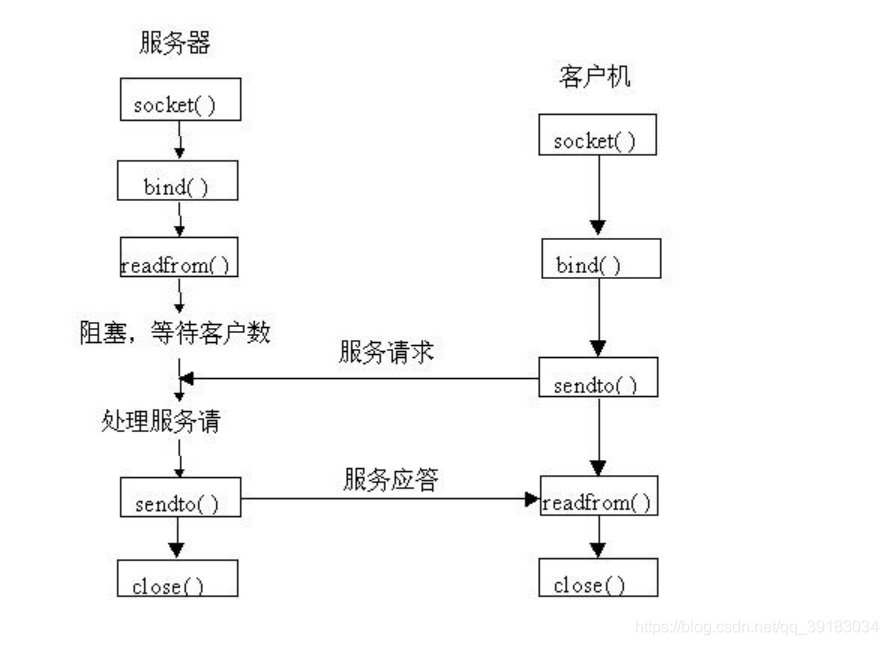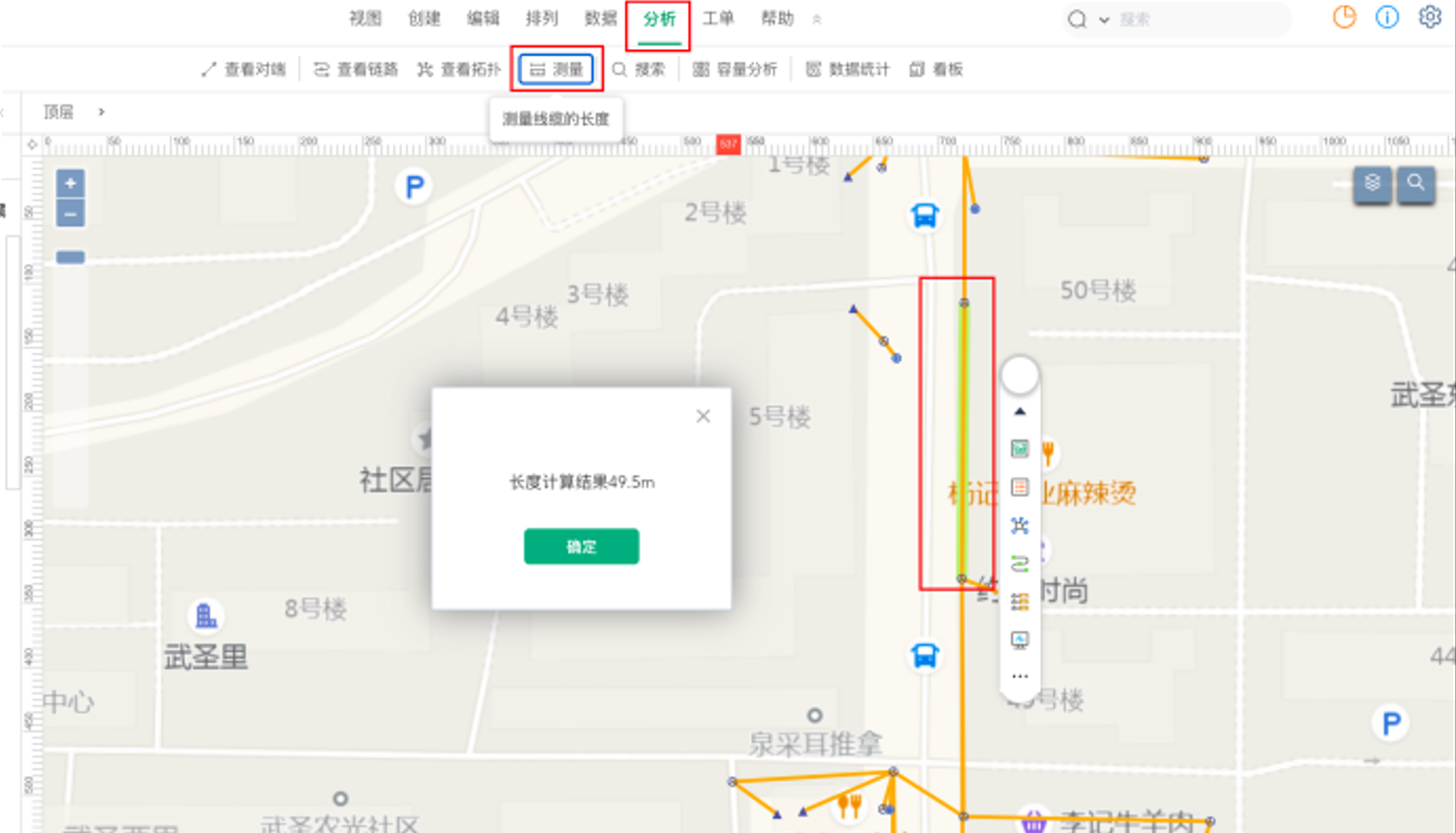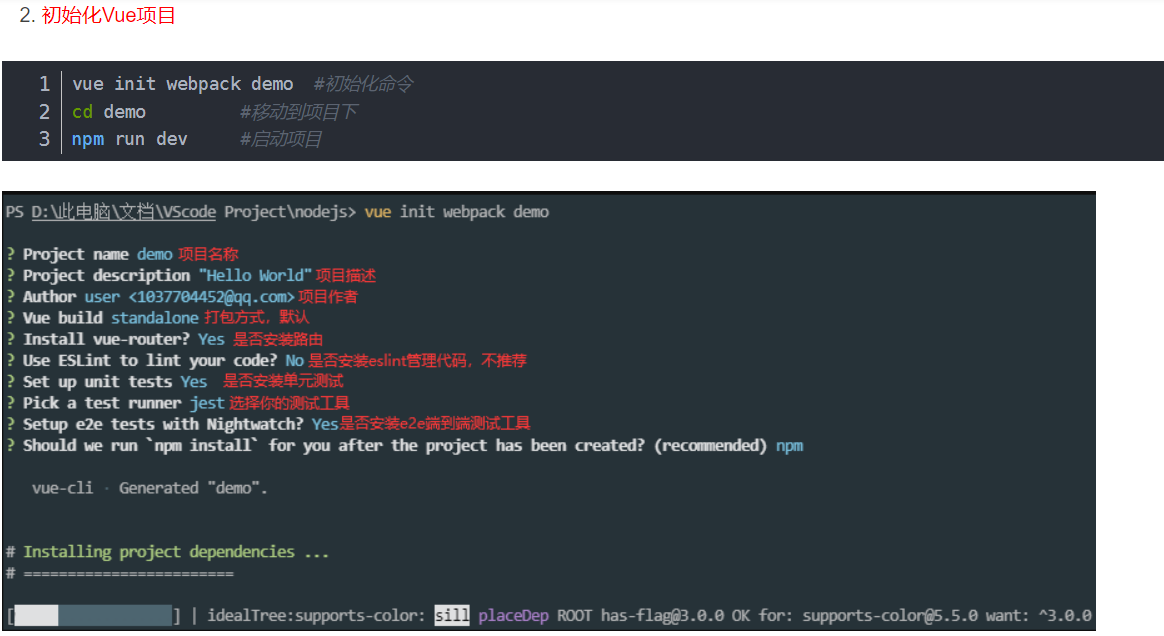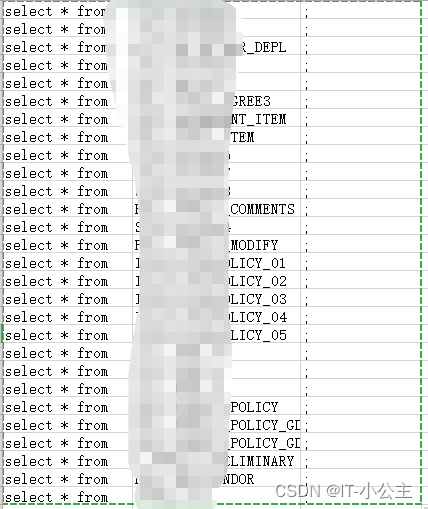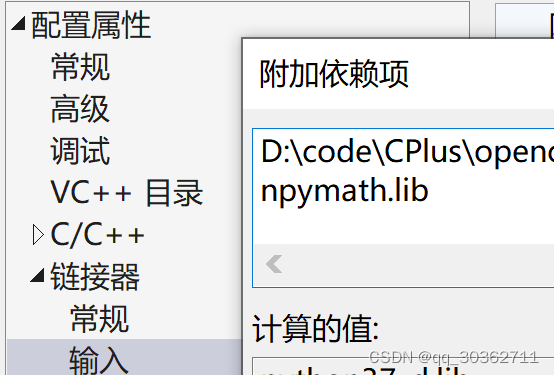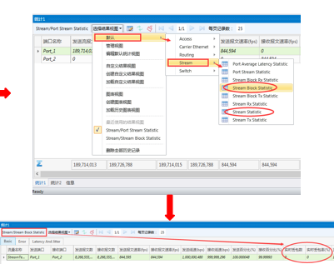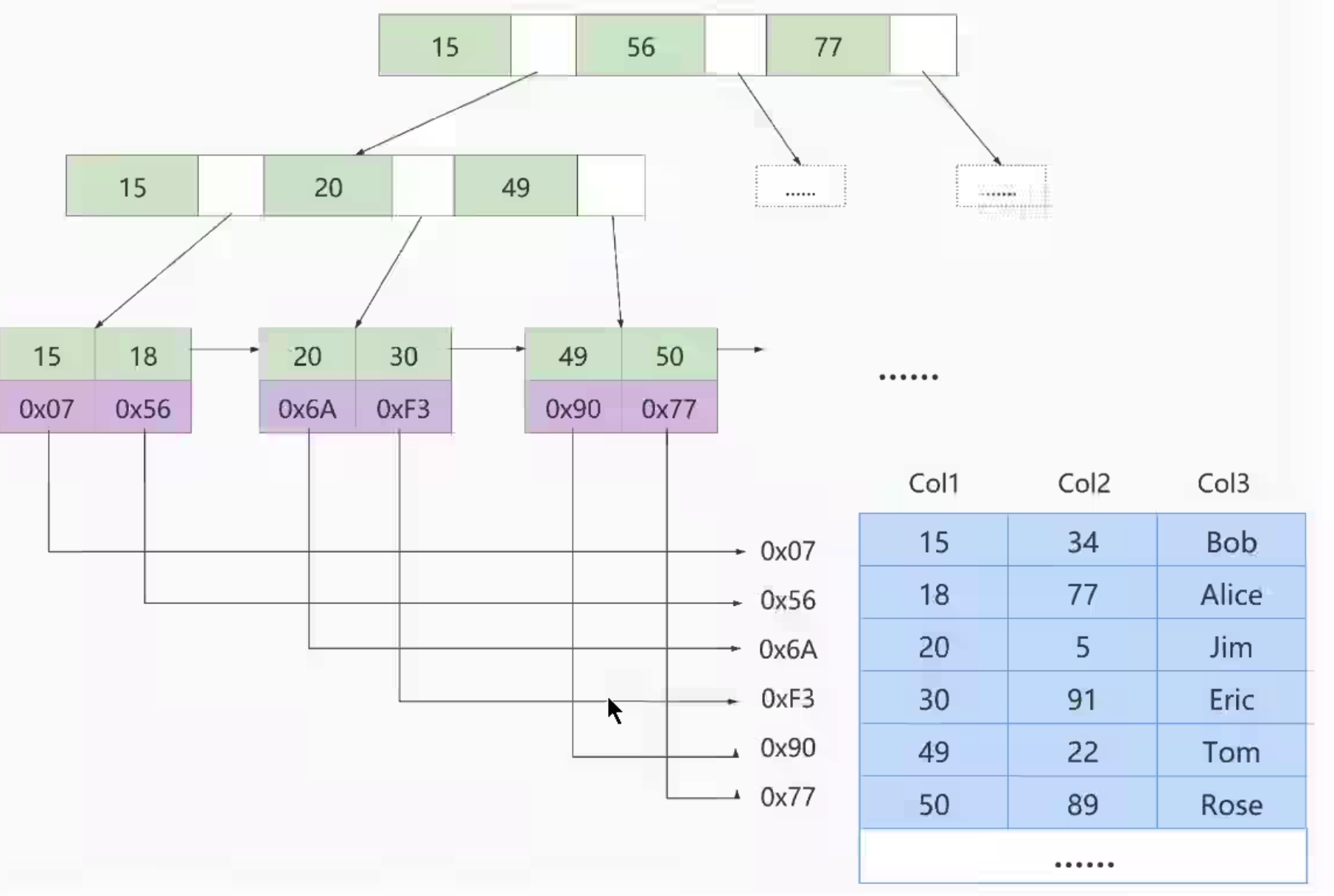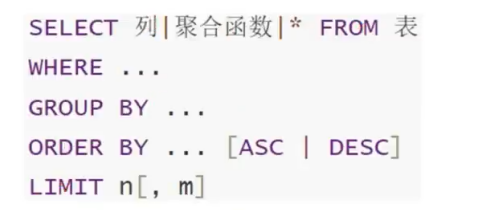正则表达式练习题:
1、显示/etc/rc.d/rc.sysinit文件中以不区分大小的h开头的行;
2、显示/etc/passwd中以sh结尾的行;
3、显示/etc/fstab中以#开头,且后面跟一个或多个空白字符,而后又跟了任意非空白字符的行;
4、查找/etc/rc.d/rc.local中包含“以to开始并以to结尾”的字串行;
5、查找/etc/inittab中含有“以s开头,并以d结尾的单词”模式的行;
6、查找ifconfig命令结果中的1-255之间的整数;
7、显示/var/log/secure文件中包含“Failed”或“FAILED”的行;
8、在/etc/passwd中取出默认shell为bash的行;
9、以长格式列出/etc/目录下以ns开头、.conf结尾的文件信息;
10、高亮显示passwd文件中冒号,及其两侧的字符;
sed练习题:
1、删除/etc/grub2.conf文件中所有以空白开头的行行首的空白字符
2、删除/etc/fstab文件中所有以#开头,后面至少跟一个空白字符的行的行首的#和空白字符
3、在/root/install.log每一行行首增加#号
4、在/etc/fstab文件中不以#开头的行的行首增加#号
5、利用sed 取出ifconfig命令中本机的IPv4地址
6、关闭本机SELinux的功能
7、在/etc/hosts配置文件中添加内容
正则表达式练习
1、显示/root/shell/day6/test文件中以不区分大小的h开头的行;
[root@localhost day6]# cat test.txt
hello
world
Hi
everybody
good
Happy
[root@localhost day6]# grep "^[hH]" /root/shell/day6/test
hello
Hi
Happy
2、显示/etc/passwd中以sh结尾的行;
[root@localhost day6]# grep sh$ /etc/passwd
root:x:0:0:root:/root:/bin/bash
czc01:x:1000:1000:czc01:/home/czc01:/bin/bash
rhel:x:1001:1001::/home/rhel:/bin/bash
user1:x:1002:1002::/home/user1:/bin/bash
user2:x:1234:1234::/home/user2:/bin/bash
test:x:1235:2000::/home/test:/bin/bash
3、显示/etc/fstab中以#开头,且后面跟一个或多个空白字符,而后又跟了任意非空白字符的行;
[root@localhost day6]# grep -E "^#[[:space:]]+[^[:space:]]*" /etc/fstab

4、查找/root/shell/day6/test中包含“以to开始并以to结尾”的字串行;
[root@localhost day6]# grep "^to.*\to$" test
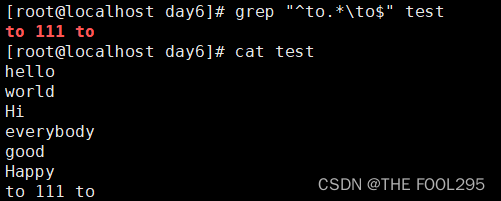
5、查找/etc/inittab中含有“以s开头,并以d结尾的单词”模式的行;
[root@localhost day6]# grep -w "\<s[a-Z]*d\>" /etc/inittab
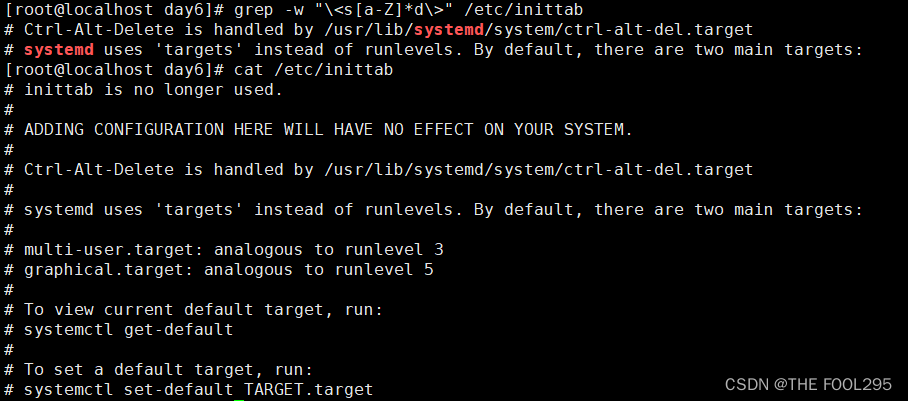
6、查找ifconfig命令结果中的1-255之间的整数;
[root@localhost day6]# ifconfig | grep -wE "[1-9][0-9]?|1[0-9]{2}|2[0-4][0-9]|25[0-5]"

7、显示/root/shell/day6/test文件中包含“Failed”或“FAILED”的行;
[root@localhost day6]# grep -wE "F(ailed|AILED)" test
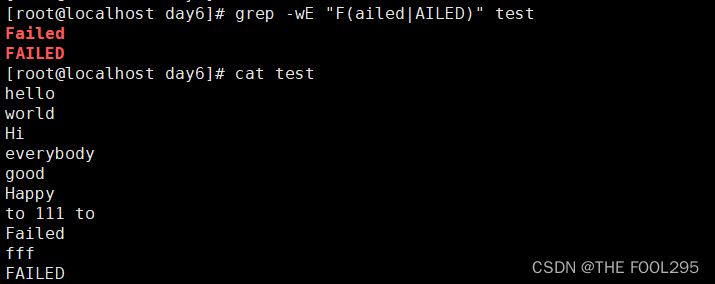
8、在/etc/passwd中取出默认shell为bash的行;
[root@localhost day6]# grep -w "bash$" /etc/passwd

9、以长格式列出/etc/目录下以ns开头、.conf结尾的文件信息;
[root@localhost etc]# ll `ls | grep "^ns.*\.conf$"`
lrwxrwxrwx. 1 root root 29 11月 19 08:56 nsswitch.conf -> /etc/authselect/nsswitch.conf
10、高亮显示passwd文件中冒号,及其两侧的字符;
[root@localhost etc]# grep -E ".?:*:.?" /etc/passwd
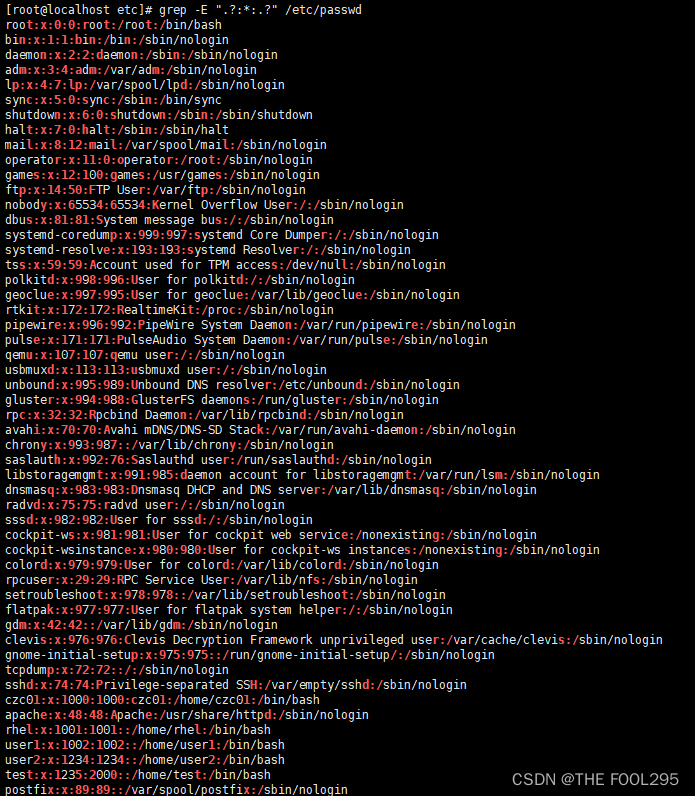
sed练习
1、删除/root/shell/day6/test文件中所有以空白开头的行行首的空白字符
[root@localhost day6]# sed 's/^[[:space:]]*//g' /root/shell/day6/test

2、删除/etc/fstab文件中所有以#开头,后面至少跟一个空白字符的行的行首的#和空白字符
[root@localhost day6]# sed 's/^#[[:space:]]*//g' /etc/fstab
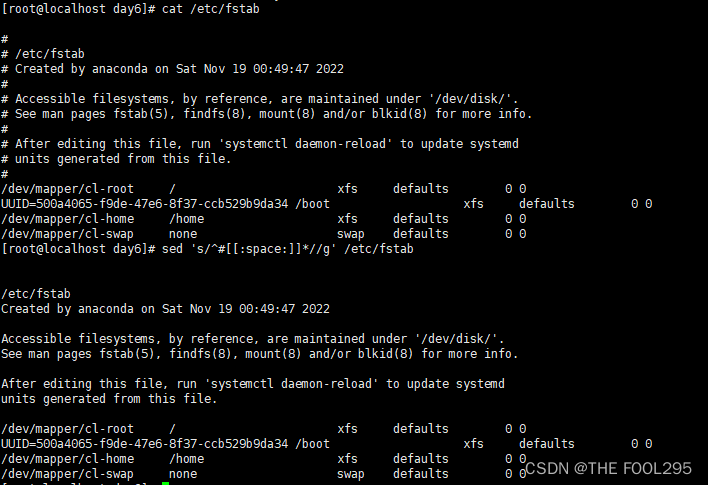
3、在/root/shell/day6/test每一行行首增加#号
[root@localhost day6]# sed 's/^.*$/#&/g' test
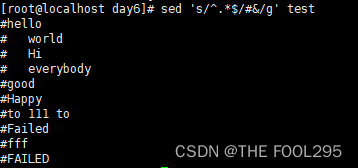
4、在/etc/fstab文件中不以#开头的行的行首增加#号
[root@localhost day6]# sed 's/!(^#)/#&/g' /etc/fstab
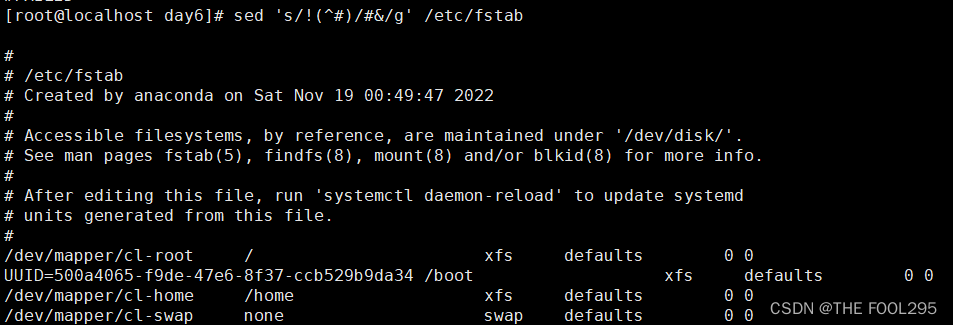
5、利用sed 取出ifconfig命令中本机的IPv4地址
[root@localhost day6]# ifconfig | sed -n '2p'|sed -r 's/.*inet[[:space:]]*//'|sed -r 's/[[:space:]]*netmask.*//'
192.168.210.128
6、关闭本机SELinux的功能
[root@localhost day6]# sed -i 's/enforcing/disabled/' /etc/selinux/config
7、在/etc/hosts配置文件中添加内容
[root@localhost day6]# sed -i '1 i hello hahaha' /etc/hosts


